
LaCie's 2big NAS Review
The SMB (Small to Medium Businesses) / SOHO (Small Office / Home Office) NAS market is a highly competitive one. We have been reviewing a number of ARM-based 2-bay / 4-bay NAS units over the last year or so. In addition, we have also looked at some x86-based high-end systems such as the LaCie 5Big Storage Server and the QNAP TS-659 Pro II.
On May 15th, LaCie launched an updated version of their 2big Network 2 2-bay product, the 2big NAS. The 2big NAS comes in diskless and 6TB versions, priced at $299.99 and $649.00 respectively. At this price point, the NAS competes with advanced 2-bay SMB solutions such as the Synology DS211+, and not the LG NAS N2A2 (which is geared primarily towards home users). Do the features and performance match up to the price point? Read on for our analysis and detailed review.
Read More ...
NVIDIA Launches Fermi Based GeForce GT 610, GT 620, GT 630 Into Retail
While we were off at NVIDIA’s GTC 2012 conference seeing NVIDIA’s latest professional products, NVIDIA’s GeForce group was busy with some launches of their own. The company has quietly launched the GeForce GT 610, GT 620, and GT 630 into the retail market. Unfortunately these are not the Kepler GeForce cards you were probably looking for.
GT 630 GDDR5 | GT 630 DDR3 | GT 620 | GT 610 | |
Previous Model Number | GT 440 GDDR5 | GT 440 DDR3 | N/A | GT 520 |
Stream Processors | 96 | 96 | 96 | 48 |
Texture Units | 16 | 16 | 16 | 8 |
ROPs | 4 | 4 | 4 | 4 |
Core Clock | 810MHz | 810MHz | 700MHz | 810MHz |
Shader Clock | 1620MHz | 1620MHz | 1400MHz | 1620MHz |
Memory Clock | 3.2GHz GDDR5 | 1.8GHz DDR3 | 1.8GHz DDR3 | 1.8GHz DDR3 |
Memory Bus Width | 128-bit | 128-bit | 64-bit | 64-bit |
Frame Buffer | 1GB | 1GB | 1GB | 1GB |
GPU | GF108 | GF108 | GF108/GF117? | GF119 |
TDP | 65W | 65W | 49W | 29W |
Manufacturing Process | TSMC 40nm | TSMC 40nm | TSMC 40nm | TSMC 40nm |
At the bottom of the 600 series retail stack is the GeForce GT 610, which is a rebadge of the GT 520. This means it’s either a GF119 GPU or cut-down GF108 GPU featuring a meager 48 CUDA Cores and a 64bit memory bus, albeit with a low 29W TDP as a result. This is truly a rock bottom card meant to be a cheap as possible upgrade for older computers, as even an Ivy Bridge HD4000 iGPU should be able to handily surpass it.
The second card is the GT 620, which is a variant of the OEM-only GT 530. With 96 CUDA cores we’re not 100% sure that this is GF108 as opposed to the 28nm GK117, but as NVIDIA currently has a 28nm capacity bottleneck we can’t see them placing valuable 28nm chips in low-end retail cards. Furthermore the 49W TDP perfectly matches the GF108 based GT 530. Compared to the OEM GT 620 the retail model has twice as many CUDA cores, so it has twice as much shader performance on paper, but because of the 64bit memory bus it’s going to be significantly memory bandwidth starved.
The final new 600 series card is the GT 630, which is a rebadge of the GT 440. Like the GT 440 this card comes in two variants, a model with DDR3 and a model with GDDR5. Both models are based on GF108 and have all 96 CUDA cores enabled, and have the same core clock of 810MHz. At the same time this is going to be the card that deviates from its OEM counterpart the most. The OEM GT 630 was a Kepler GK107 card, so this rules out getting a Kepler based GT 630 retail card any time in the near future.
As always, rebadging doesn’t suddenly make a good card bad – or vice versa – but it’s disappointing to once again see this mess transition over to the retail market. We hold to our belief that previous generation products are perfectly acceptable as they were, and that the desire to have yearly product numbers in an industry that is approaching 2 year product cycles is silly at its best, and confusing at its worst.
Read More ...
PC Power & Cooling Silencer Mk III 400W
We have already reviewed quite a few PC Power & Cooling products on AnandTech, but this time we will be looking at their first series with modular cables and a white case. In contrast to older PSUs PC Power & Cooling delivered, this one provides a 120mm fan for cooling as well. The new Silencer MK III models are available in 400, 500 and 600W only. This is a good news for everybody who is interested in small power supplies as they deliver more than enough power for any common PC with one graphics card.
PC Power & Cooling uses Japanese capacitors, one powerful +12V output, a ball bearing fan from ADDA , and a partially modular cable management. With 80 Plus Bronze certification, the Silencer MK III seems to be an average product, but Seasonic is the company behind these products—and they're definitely a good choice. What about the internal design and components? On the following pages we will see if they meet one's expectations.
Read More ...
OCZ Releases Low Profile Version of Vertex 3
OCZ has added a low profile version of the Vertex 3 to their SSD portfolio. The drive has a height of 7mm, which is 2.5mm slimmer than most 2.5" drives are. Other specifications match the regular Vertex 3, so reading our Vertex 3 review will give you an idea of the performance, but below is a specification table in case you don't remember the main details off hand:
OCZ Vertex 3 Low Profile Specifications | ||||
Capacity | 60GB | 120GB | 240GB | 480GB |
Interface | SATA 6Gb/s | |||
NAND | 2Xnm MLC | |||
Number of NAND Packages | 8 | 16 | 16 | 16 |
Number of Die per Package | 1 | 1 | 2 | 4 |
Sequential Read | 535MB/s | 550MB/s | 550MB/s | 530MB/s |
Sequential Write | 480MB/s | 500MB/s | 520MB/s | 450MB/s |
Max 4K Random Write | 80K IOPS | 85K IOPS | 85K IOPS | 35K IOPS |
We are definitely experiencing a shift towards smaller form factors in storage devices and computing in general. Especially Intel's Ultrabook project is fuel for the fire because in order to meet Intel's strict dimension limitations, it's necessary to use either mSATA SSDs or thinner 2.5" SSDs/HDDs. On top of that, the internal components of SSDs don't usually even need the extra 2.5mm and making a drive 7mm instead of 9.5mm is only a matter of shaving off some of the chassis. I'll give you a sneak preview of our Plextor M3 Pro review to demonstrate this:
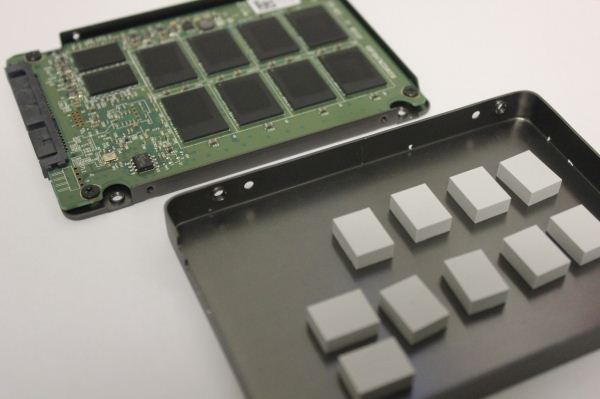
Plextor M3 - 9.5mm tall
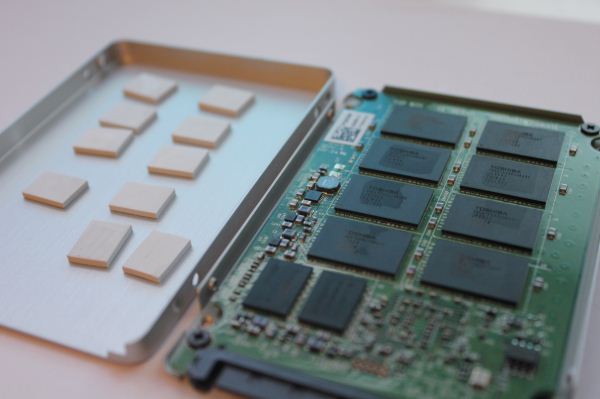
Plextor M3 Pro - 7mm tall
Both SSDs have exactly the same PCBs and the only thing that makes the M3 Pro thinner is the fact that it has thinner thermal pads. What this means is that pretty much any 2.5" SSD could be turned into a 7mm model without even modifying the PCB.I would like to see more hybrid approaches like what Intel is doing, though. Hybrid in this case means that there's a riser attached by screws that turns a 7mm SSD into a 9.5mm SSD. Some laptops are designed for 9.5mm drives and a 7mm drive might jiggle inside the laptop.
Example of the use of a riser
Having a riser means the user doesn't need to decide between 7mm and 9.5mm as you can easily remove the riser if you need to fit drive inside a computer that only takes 7mm drives. Of course, offering 7mm and 9.5mm drives like OCZ and Plextor are doing is better than offering only 9.5mm drives, but using a riser still looks like the best option.
Read More ...
Eurocom Monster 1.0: Clevo's Little Monster
When Alienware announced the Ivy Bridge refresh for its gaming notebook lineup, one model was conspicuously absent. Word filtered out that the smallest member of the range, the 11.6” M11x, would not be refreshed and that Dell was preparing to discontinue the line. For ultramobile gamers, the loss of the M11x is a huge blow, because it was one of the more unique notebooks out there—a near ultraportable with legitimate gaming aspirations, backed up by gaming performance that lit the class standards on fire. It was a truly standout notebook, and it will be sorely missed.

But now, a spiritual successor emerges in the form of Clevo’s W110ER. We have this unit courtesy of Eurocom, who are calling it the Monster 1.0, but other boutiques selling the W110ER include AVADirect, OriginPC, Sager, and XoticPC amongst others. We typically see this with larger notebooks from Clevo and Compal, but it hasn’t been as prominent with smaller notebooks until now, with the exception of some ASUS models from years past.
The W110ER spec sheet actually reads like a pipe dream, something that you would come up with if things like thermal limits didn’t exist. The performance-class GPU is present and accounted for—Clevo ships every W110ER whitebook with a Kepler-based GT 650M (2GB DDR3, 384 CUDA cores, Optimus). But the most impressive thing here is that the W110ER has support for Intel’s new IVB 35W quad-core CPUs. Yeah seriously, a quad-core 11.6” notebook. Just to refresh your memory, the M11x made use of Intel’s low voltage dual-core parts, so this is a significant step up in CPU performance. It’s a ridiculous amount of performance stuffed into a tiny notebook. Interested? Read on.
Read More ...
Corsair Vengeance C70 Case Review: Going for the Gamers
Corsair has had an excellent run as a case designer, showing growth with each new enclosure by adding some features, subtracting other ones, moving things around, and generally continuing to experiment. The Obsidian and Carbide lines in particular have shown healthy progress, but today Corsair launches a fourth line under their popular Vengeance gaming brand: the Vengeance C70.
While the exteriors of the Obsidian and to a lesser extent Carbide cases have all been fairly austere, the Vengeance C70's target is pretty clear: they're going after gamers. Thus far, products in the Vengeance market have generally been of high quality and haven't been particularly ostentatious, but the C70's external design is an unusual step for Corsair. Is the C70 as a whole part of Corsair's continued evolution as a case designer, or is this their first major misstep along the way?
Read More ...
GTC 2012 Part 1: NVIDIA Announces GK104 Based Tesla K10, GK110 Based Tesla K20
We’re here at NVIDIA’s GPU Technology Conference (GTC) 2012, where NVIDIA is holding their semi-annual professional developers conference. There’s been a great deal announced that will take a few days to completely go over, but for now we wanted to start on the product side with NVIDIA’s major product announcements. With the launch of GK104 back in March NVIDIA is now ready to start rolling out some of their professional productions, and while the next generation of Quadro is not yet ready, Tesla is another matter. This brings us to our first part of our GTC coverage: the next generation of Tesla cards, Tesla K10 and Tesla K20.
Read More ...
Lenovo Announces Their 3rd Generation Intel Core Laptop Updates
It’s been a couple weeks since Intel officially unveiled Ivy Bridge, and we continue to see plenty of product announcements from the major OEMs. Yesterday, while we were busy writing about AMD’s Trinity APU, Lenovo fired off a barrage of new mobile devices. Whether you’re looking for laptops, notebooks, tablets, or ultrabooks, chances are Lenovo has a new product for your consideration.
Starting with the ultrabook side of things, the flashiest device in the lineup is the new ThinkPad X1 Carbon. As the name implies, the X1 has a carbon fiber rollcage that allows Lenovo to create a durable ultrabook without sacrificing weight. Lenovo claims this is the “world’s thinnest and lightest 14-inch ultrabook” and we see no reason to doubt the claim. Other interesting features include RapidCharge that allows the laptop to recharge to over 80% battery capacity in 30 minutes, a backlit keyboard, and a full 180 degree hinge. The X1 Carbon is a business class ultrabook, so it comes with Intel vPro technology for manageability, fingerprint scanner, and optional 3G mobile broadband. Lenovo didn’t provide any specifications yet, but we’ve heard elsewhere that the X1 Carbon will feature a 1600x900 LCD. We haven’t had a chance to test the laptop in person, but hopefully Lenovo can also do something about the keyboard experience on ultrabooks, as to date we’ve found that most of them have little if any key travel—a consequence of the thin form factor, unfortunately. Availability is planned for “this summer”, which is a bit nebulous, so if you’re interested in the X1 Carbon you’ll have to wait a bit longer before pulling the trigger.
The remainder of the lineup consists of the usual updates to their product stack. The ThinkPad L, T, W and X Series are all receiving upgrades to allow for Ivy Bridge—3rd Generation Intel Core processors. Common features across the lineup include mobile broadband, docking stations, RapidBoot, Dolby audio, and Lenovo’s ThinkPad Precision Keyboard (with backlit and/or ThinkLight options).
Starting with the L-Series, the L430 and L530 both support the same general set of hardware. Besides Ivy Bridge CPUs (Lenovo didn’t provide a list, but we’d assume it will be the dual-core range of processors), you can choose between several HDD/SSD configurations—including a 32GB mSATA caching SSD if you forego WWAN support—up to 8GB RAM, and either 1366x768 or 1600x900 LCDs. The L430 also has an optional NVIDIA Quadro NVS 5400M 1GB GPU upgrade available, with Optimus Technology; judging by our initial testing of HD 4000, the NVS 5400M should still boost graphics performance by roughly 2X.
Expansion ports consist of a single USB 3.0, three USB 2.0 (one always powered), Express Card 54mm, Gigabit Ethernet, and a flash card reader (SD/SDHC/SDXC/MMC). VGA and mini-DisplayPort outputs are present, along with a single headphone/microphone jack. You can also equip either laptop with the standard 6-cell battery (up to 8 hours battery life) or an extended capacity 9-cell (up to 13.5 hours battery life), and both come with optical drives. The L430 measures 13.94” x 9.57” x 1.17-1.24” (354mm x 243mm x 29.6-31.4mm) and weighs 5.0 lbs. (2.27kg) with the 6-cell battery, while the L530 measures 14.96” x 9.72” x 1.25-1.31” (380mm x 247mm x 31.7-33.4mm) and starts at 5.4 lbs. (2.45kg) with the 6-cell battery. Pricing should starts at around $879, with availability in early June.
The T-Series is the workhorse of Lenovo’s ThinkPad lineup, with higher quality build materials (e.g. magnesium alloy rollcages) and higher performance components, along with support for up to 16GB RAM. Most of the options are similar to the L-Series, but the T430 and T530 add support for an optional battery slice (up to 32.5 hours of battery life on the T430, or 30 hours on the T530!) while the T430s supports only 4-cell and 6-cell batteries but adds the option for a bay battery (e.g. in place of the optical drive). Storage options on all three models include Opal FDE (Full Disc Encryption), on either hard drives or SSDs—or you can still go with a normal HDD/SSD. The T530 is also available with a second HDD in place of the optical drive. NVIDIA Optimus switchable graphics is available on all models; only the T430s explicitly mentions the NVS 5400M, though we suspect the others will use the same GPU. The T430/T430s both feature 1366x768 or 1600x900 LCDs, while the T530 includes the two lower resolutions along with a high quality 95% gamut 1920x1080 panel.
In terms of expansion ports, the laptops have two USB 3.0 ports, two USB 2.0 ports (one configurable as always on), VGA, mini-DisplayPort, a flash reader, and an optional Smart Card reader; the T430/T530 also add an Express Card 34mm slot. The T430s is the lightest and slimmest of the trio, starting at 3.94 lbs. (1.79kg) and measuring 13.50” x 9.05” x 0.83”-1.02” (343mm x 230mm x 21.2mm-26mm. The T430 is slightly larger/heavier, starting at 4.77 lbs. (2.17kg) and 13.8” x 9.13” x 1.18” (350.5mm x 232mm x 29.9mm) while the T530 tips the scales at 5.56 lbs. (2.5kg) and measures 9.65” x 14.68” x 1.25”-1.40” (245.1mm x 372.8mm x 31.8-35.6mm). Availability is again early June, with the T430 and T530 starting at around $879, the T430s starting at $1399.
The W530 is the mobile workstation upgrade to the T530, with identical dimensions (9.65” x 14.68” x 1.25”-1.40” / 245.1mm x 372.8mm x 31.8-35.6mm) but a slightly higher starting weight of 5.95 lbs. (2.7kg). Nearly all of the options are the same, but the W530 adds support for up to 32GB RAM and the graphics get boosted from Quadro NVS to full-blown Quadro cards. Lenovo lists the Quadro K1000 and K2000 as options, which are presumably the Kepler-based replacements for the Fermi 1000M/2000M; the cards are so new that we can’t even find specs on NVIDIA’s site right now! The W530 has the same display options as the T530, and about the only other difference immediately apparent is the addition of a slightly higher capacity 62Wh 6-cell battery with a 3-year warranty (instead of the 1-year warranty 57Wh battery). Pricing for the W530 starts at approximately $1529, with availability again in early June.
Wrapping things up we have the X-Series, with the X230 and X230t. The X230 is a traditional ultraportable while the X230t takes many of the elements but mixes things up to become a convertible tablet. Both models feature 12.5” IPS displays, though there’s a non-IPS panel available on the X230; the X230t comes standard with a multitouch panel but has the option for a pen-only direct-bonded Gorilla Glass display. The storage department again has a variety of HDD and SSD options, including 32GB SSD caching and FDE solutions, and despite the small size there’s still an optical drive present in the UltraBase. Battery options on the X230 cover the gamut, with 4-cell (29Wh), 6-cell (63Wh), 9-cell (94Wh), and an optional 6-cell (57Wh) slice—you can get up to 24.9 hours with the 9-cell and slice. The X230t uses different batteries, with a 6-cell (29Wh) standard or a 9-cell (62Wh) upgrade, along with a slim external battery pack (157Wh) that can provide up to 18 hours of mobility.
Expansion ports include two USB 3.0 ports, one always on USB 2.0 port, flash reader, VGA, mini-DisplayPort, Express Card 54, and optional Smart Card reader. The X230 isn’t quite an ultrabook as it’s a bit too thick, measuring 12.01” x 8.13” x 0.75”-1.05” (305mm x 206.5mm x 19-26.6mm); it weighs 2.96 lbs (1.34kg), presumably with the default 4-cell battery. The X230t is slightly bulkier to accommodate the rotating hinge, and it measures 12” x 9” x 1.06”-1.23” (305.0mm x 228.7mm x 27.0-31.3mm) and weighs 3.67 lbs. (1.66kg). As you would expect, neither ultraportable comes cheap, with the X230 starting at around $1179 and the X230t bumping that up $300 to $1479, and both are set to arrive in June.
Besides the laptops, Lenovo also offers their updated ThinkPad Series 3/USB 3.0 Dock. As the name implies, the dock now features USB 3.0 support—five SuperSpeed ports to be precise. It also comes with dual “beyond-HD” video outputs, though no mention is made of whether they’re DisplayPort, dual-link DVI, or something else. Also present is Gigabit Ethernet and always-on mobile device charging, thanks to the separate AC power.
Read More ...
Sonic 4: Episode II Now Available for Tegra 3
Earlier this year at Mobile World Congress, NVIDIA and Sega announced Sonic 4: Episode II would be coming to TegraZone in an optimized version for NVIDIA's Tegra 3 hardware. Today the promise became reality as the $6.99 game is now available via NVIDIA's TegraZone on Tegra 3 devices. The timing alone is pretty special. While the Xbox Live Arcade version of the game debuted yesterday, the iOS version won't come out for another day and the standard Android build will take another month. NVIDIA's ability to pull even small day long exclusives over iOS is still impressive in a world where many game developers put no one ahead of Apple.
The final game seems a lot like what we played at MWC in February. It works on all Tegra 3 devices using either on-screen touch controls or an external gamepad. The gameplay is distinctly Sonic, although I'll admit my fondness for the platformer peaked years ago. The single player game has you controlling Sonic with an AI controlled Tails. Also included is a multiplayer mode that allows for co-operative play over Bluetooth. The game looks good on Tegra 3. We've been running a preview APK on some as of yet unreleased hardware so I won't comment on performance just yet.
NVIDIA promises better visuals in the Tegra 3 version of the game than the standard Android version due out in the coming weeks. While we don't have the standard Android build, NVIDIA sent along some screenshots to show the difference in image quality.
Read More ...
V3 Gaming PC Avenger Review: A New Challenger Appears
We've had a few boutiques come through here, but what V3 Gaming PC wanted to approach us with was something different than we're used to seeing. Many of the systems sent through here are aggressively tuned, designed for performance at virtually any cost. It looks fantastic on charts, but in practice you're often paying out the nose for a system that left the price-performance curve eating the dust in its speedy wake. With the Avenger, V3 wanted to do something a little different.
What we have in house today is a system they believe has been designed to be as balanced a build as possible. High performance, sure, but more well-rounded and suited for a variety of tasks without blowing up the room temperature or the power bill in the process. The reasons behind some of the decisions they've made are laudable, but some of the others may be somewhat more nebulous. Read on for our analysis of the Avenger.
Read More ...
Netgear Announces 2-stream 802.11ac R6200 router and A6200 USB 2.0 adapter
We're at Broadcom and Netgear's joint press event today, where both are announcing the commercial availability of the R6300 three spatial stream 802.11ac router which was announced at CES, and two new products: the two stream R6200 router and A6200 USB 2.0 adapter.
As a reminder, the previously announced R6300 supports 802.11ac at speeds of 1300 Mbps by utilizing 80 MHz channels on 5 GHz, 256QAM, and three spatial streams. That particular router rounds out Netgear's high-end 802.11ac offering with Broadcom's solution inside. The news today is Netgear's mid-range product, the R6200, which includes 2 spatial streams and an 867 Mbps maximum bitrate. The R6200 one USB 2.0 port compared to the R6300's two, for file and printer sharing.
Although MiniPCI Express 802.11ac adapters are coming for notebooks, those wishing to upgrade devices immediately can use the A6200 two-stream USB 2.0 adapter. The USB 2.0 adapter is built around Broadcom's BCM43526 solution. It's unfortunate the adapter isn't USB 3.0, given USB 2.0's 480 Mbps theoretical throughput limit, however BCM43526 only has a USB 2.0 host interface onboard. I'm told that Broadcom has a future USB 3.0 802.11ac solution for those wanting to see higher transfer rates not clamped by USB 2.0.
The R6300 will be available on online retailers starting tomorrow. Netgear expects the rest of the products to be available on store shelves by the end of the week. Pricing for the R6300 will be $199.99, and $179.99 for the R6200, and $69.99 for the A6200 adapter.
Update: We asked for more details about the SoC and WLAN controllers inside both the R6x00 series, and learned exactly what we wanted to know. Inside the R6300 is a BCM4706 for routing and 2.4 GHz 3x3:3, alongside the expected BCM4360 802.11ac 3-stream controller. The R6200 moves one tier down to the BCM4518 for 2x2:2 on 2.4 GHz, and a BCM4352 for 2-stream 802.11ac. This is exactly the combination that we suspected for the devices, but now have confirmed them with Netgear. In addition, the shipping firmware doesn't include beamforming, but will enable it in a software update soon after launch.
Read More ...
What We've Been Waiting For: Testing OpenCL Accelerated Handbrake with AMD's Trinity
AMD, and NVIDIA before it, has been trying to convince us of the usefulness of its GPUs for general purpose applications for years now. For a while it seemed as if video transcoding would be the killer application for GPUs, that was until Intel's Quick Sync showed up last year.
With Trinity, AMD has an answer to Quick Sync with its integrated VCE, however the performance is hardly as similar as the concept. In applications that take advantage of both Quick Sync and VCE, the Intel solution is considerably faster. While this first implementation of working VCE is better than x86 based transcoding on AMD's APUs, it still needs work:
Quick Sync's performance didn't move all users to Sandy/Ivy Bridge based video transcoding. One of its biggest limitations is the lack of good software support for the standard. We use applications like Arcsoft's Media Converter 7.5 and Cyber Link's Media Espresso 6.5 not because we want to, but because they are among the few transcoding applications that support Quick Sync. What we'd really like to see is support for Quick Sync in x264 or through an application like Handbrake.
The open source community thus far hasn't been very interested in supporting Intel's proprietary technologies. As a result, Quick Sync remains unused by the applications we want to use for video transcoding.
In our conclusion to this morning's Trinity review, we wrote that AMD's portfolio of GPU accelerated consumer applications is stronger now than it has ever been before. Photoshop CS6, GIMP, Media Converter/Media Espresso and WinZip 16.5 for the most part aren't a list of hardly used applications. These are big names that everyone is familiar, that many have actual seat time with. Now there's always the debate of whether or not the things you do with these applications are actually GPU accelerated, but AMD is at least targeting the right apps with its GPU compute efforts.
The list is actually a bit more impressive than what we've published thus far. Several weeks ago AMD dropped a bombshell: x264 and Handbrake would both feature GPU acceleration, largely via OpenCL, in the near future. I begged for an early build of both of them and eventually got just that. What you see below may look like a standard Handbrake screenshot, but it's actually a look at an early build of the OpenCL accelerated version of Handbrake:
As I mentioned before, the application isn't ready for prime time yet. The version I have is currently 32-bit only and it doesn't allow you to manually enable/disable GPU acceleration. Instead, to compare the x86 and OpenCL paths we have to run the beta Handbrake release against the latest publicly available version of the software.
GPU acceleration in Handbrake comes via three avenues: DXVA support for GPU accelerated video decode, OpenCL/GPU acceleration for video scaling and color space conversion, and OpenCL/GPU acceleration of the lookahead function of the x264 encoding process.
Video decode is the lowest hanging fruit to improving video transcode performance, and by using the DXVA API Handbrake can leverage the hardware video decode engine (UVD) on Trinity as well as its counterpart in Intel's Sandy/Ivy Bridge.
The scaling, color conversion and lookahead functions of the encode process are similarly obvious candidates for offloading to the GPU. The latter in particular is already data parallel and runs in its own thread, making it a logical fit for the GPU. The lookahead function determines how many frames the encoder should look ahead in time in the input stream to achieve better image quality. Remember that video encoding is fundamentally a task of figuring out which parts of frames remain unchanged over time and compressing that redundant data.
We're still working on a lot of performance/quality characterization of Handbrake, but to quickly illustrate what it can do we performed a simple transcode of a 1080p MPEG-2 source using Handbrake's High Profile defaults and a 720p output resolution.
The OpenCL accelerated Handbrake build worked on Sandy Bridge, Ivy Bridge as well as the AMD APUs, although obviously Sandy Bridge saw no benefit from the OpenCL optimizations. All platforms saw speedups however, implying that Intel benefitted handsomely from the DXVA decode work. We ran both 32-bit x86 and 32-bit GPU accelerated results on all platforms. The results are below:
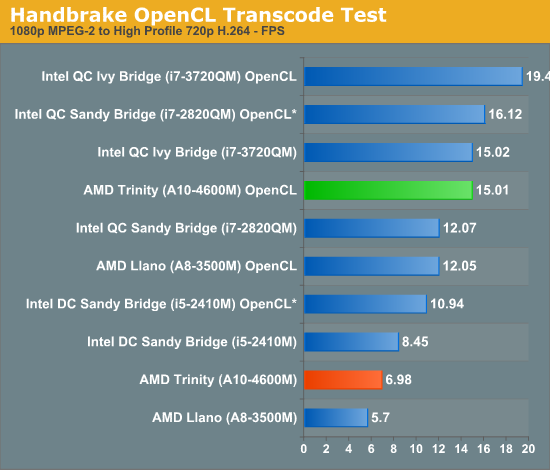
*SNB's GPU doesn't support OpenCL, video decode should be GPU accelerated, all OpenCL work is handled by the CPU
This truly is the holy grail for what AMD is hoping to deliver with heterogeneous compute in the short term. The Sandy Bridge comparison is particularly telling. What once was a significant performance advantage for Intel, shrinks to something unnoticeable. If AMD could achieve similar gains in other key applications, I think more users would be just fine in ignoring the CPU deficit and would treat Trinity as a balanced alternative to Intel. The Ivy Bridge gap is still more significant but it's also a much more expensive chip, and likely won't appear at the same price points as AMD's A10 for a while.
We're working on even more examples of where AMD's work in enabling OpenCL accelerated applications are changing the balance of power in the desktop. Handbrake is simply the one we were most excited about. It will still be a little while before there are public betas of x264 and Handbrake, but it's at least something we can now look forward to.
Read More ...
Texas School District Approves RFID Tag Trial for Student Attendance
Some parents are worried about the privacy of their children
Read More ...
New Male Contraceptives Could Rely on Gene Essential for Sperm Development
Discovery could lead to new male contraceptive and treatment for infertility
Read More ...
Report: Toshiba Leaving U.S. Netbook Market
Toshiba will offer no more netbooks in the U.S.
Read More ...
Available Tags:NVIDIA , GeForce , OCZ , Gamers , Lenovo , Intel , Gaming , router , USB , Toshiba , Netbook ,

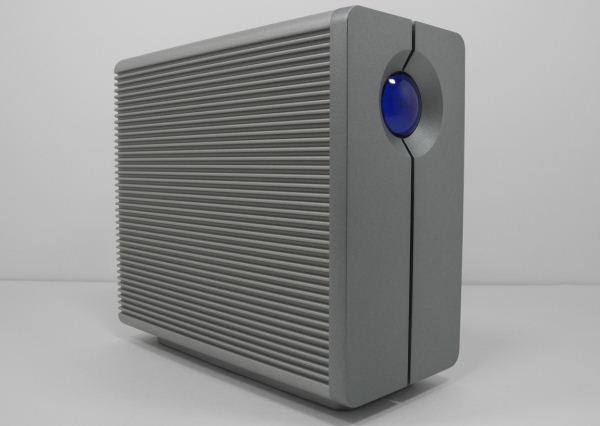
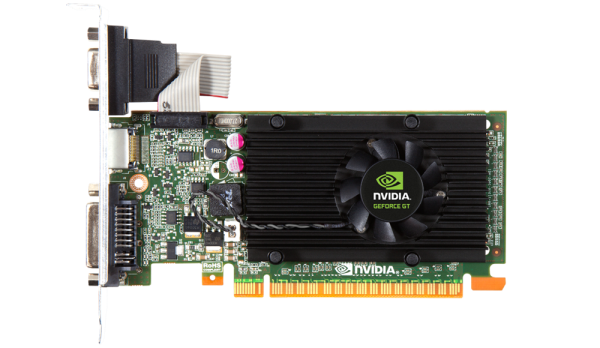
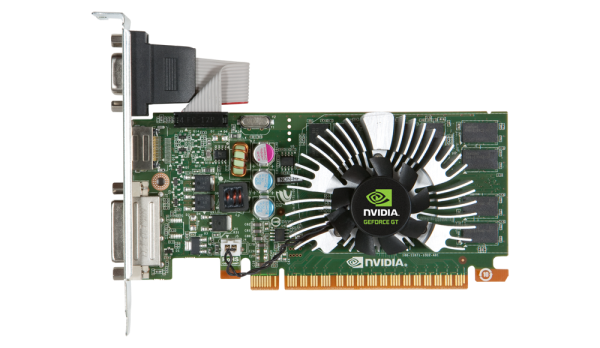
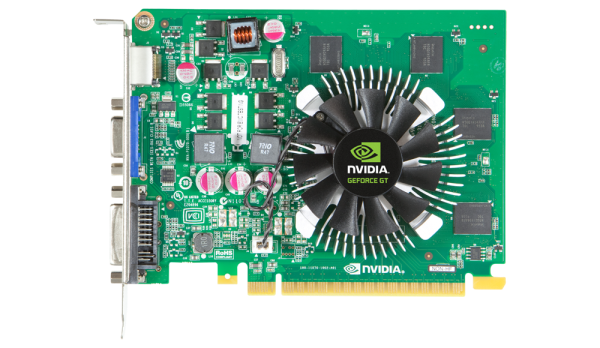
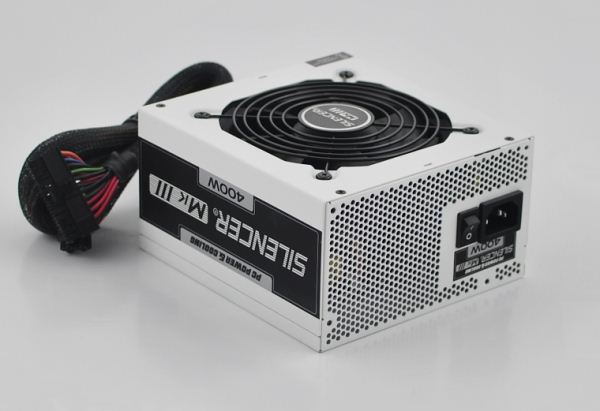
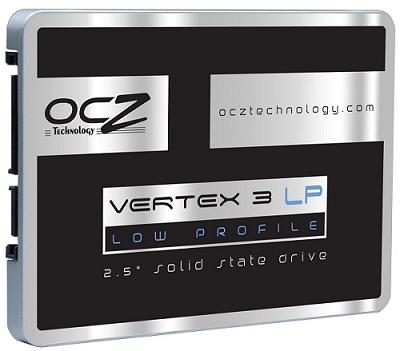


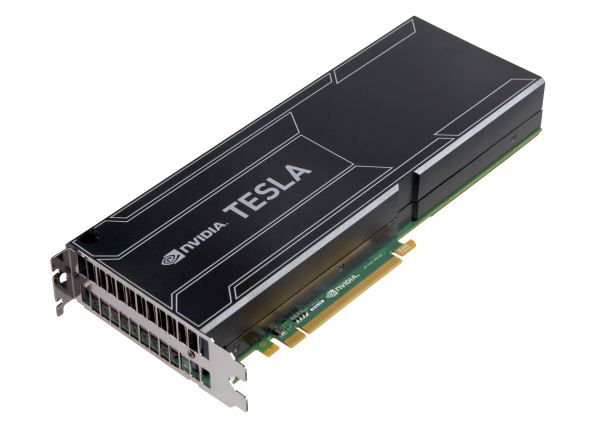
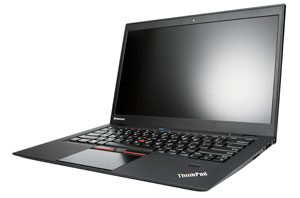



























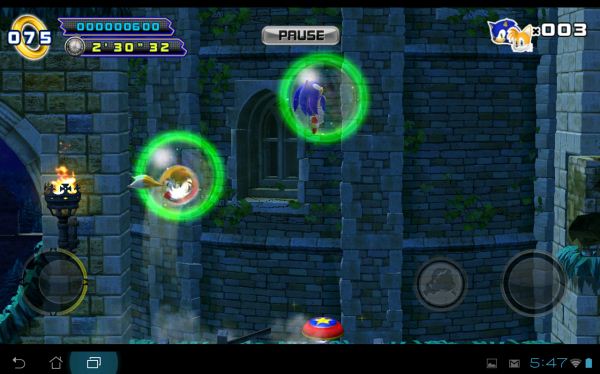








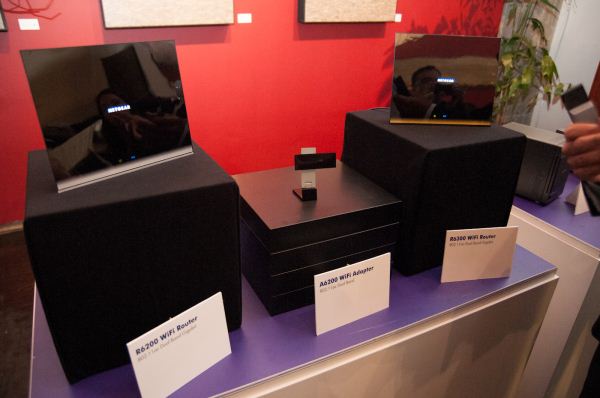






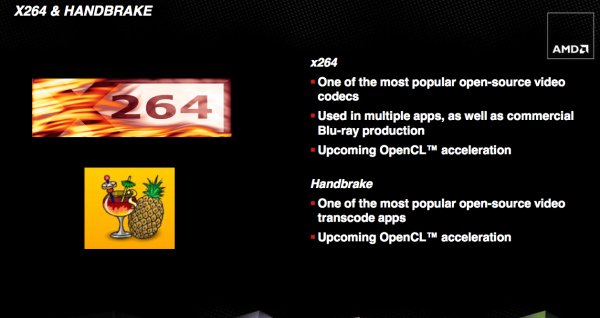
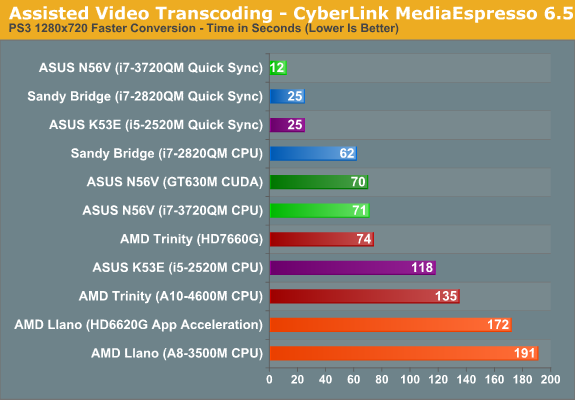
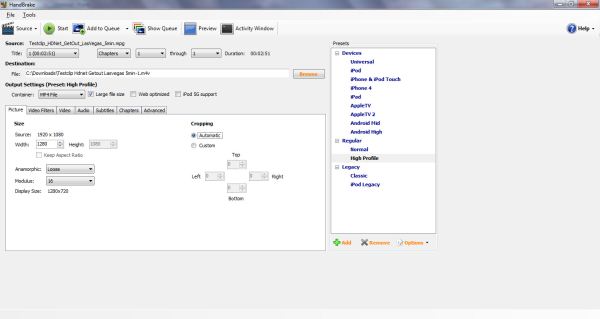
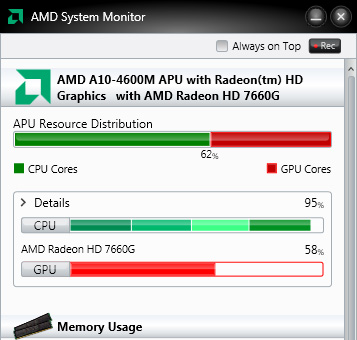
No comments:
Post a Comment